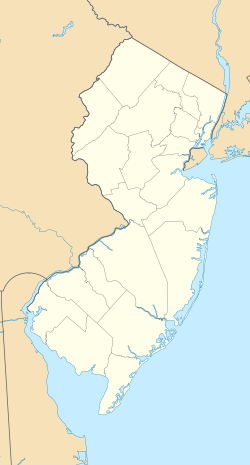Memorial Presbyterian Church | |
 | |
| Location | 202 E. Mantua Avenue Wenonah, New Jersey |
|---|---|
| Coordinates | 39°44′28″N75°8′48″W / 39.74111°N 75.14667°W |
| Built | 1904 |
| Architect | Isaac Newton Pursell |
| Architectural style | Late Gothic Revival |
| NRHP reference No. | 13000585 [1] |
| NJRHP No. | 4923 [2] |
| Significant dates | |
| Added to NRHP | August 7, 2013 |
| Designated NJRHP | June 3, 2013 |
The Memorial Presbyterian Church is located at 202 E. Mantua Avenue in the borough of Wenonah in Gloucester County, New Jersey. The church was designed by architect Isaac Newton Pursell in Late Gothic Revival style and built in 1904. It was added to the National Register of Historic Places on August 7, 2013, for its significance in architecture. [1] [3]



